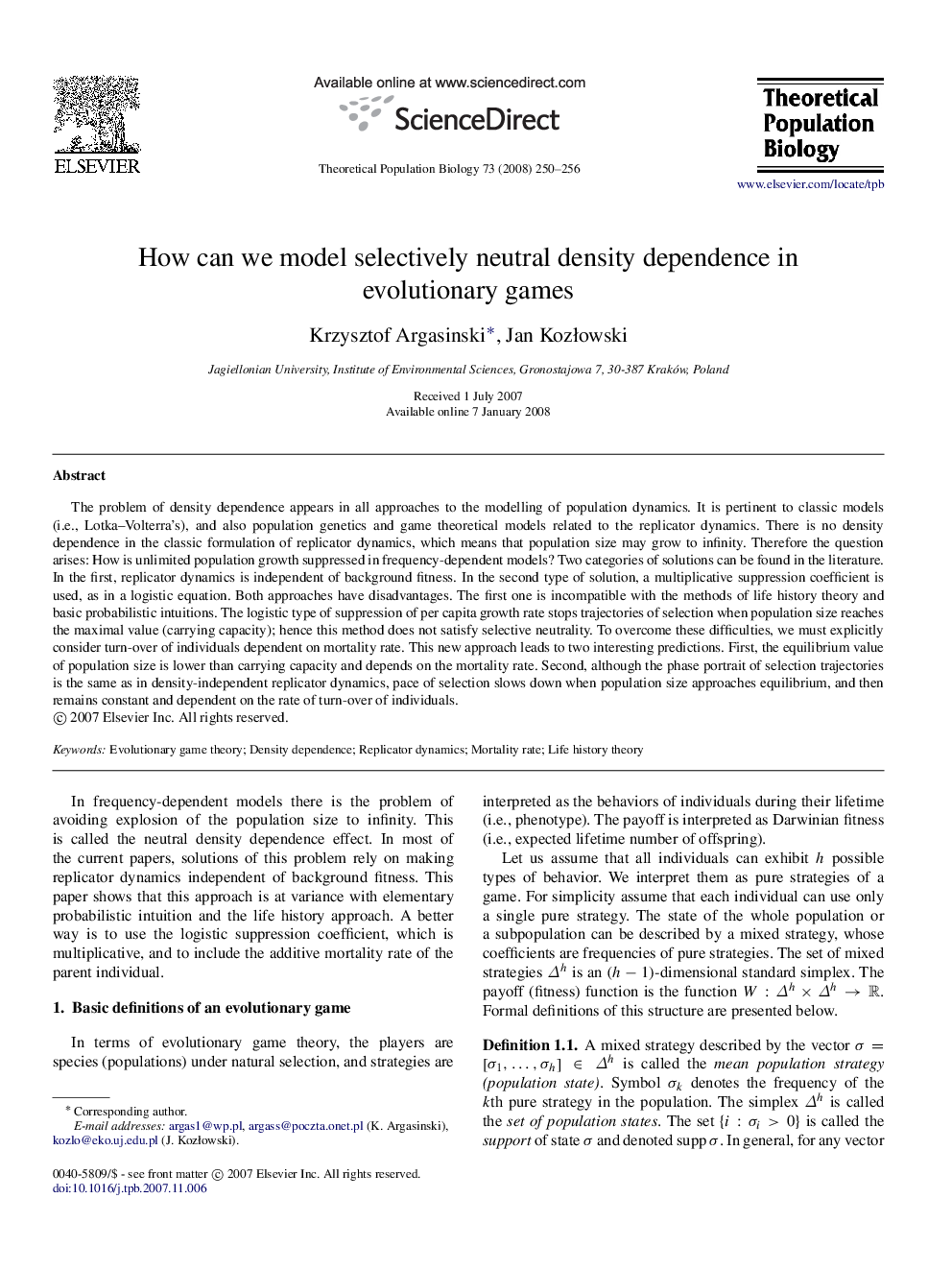| کد مقاله | کد نشریه | سال انتشار | مقاله انگلیسی | نسخه تمام متن |
|---|---|---|---|---|
| 4502879 | 1320607 | 2008 | 7 صفحه PDF | دانلود رایگان |

The problem of density dependence appears in all approaches to the modelling of population dynamics. It is pertinent to classic models (i.e., Lotka–Volterra’s), and also population genetics and game theoretical models related to the replicator dynamics. There is no density dependence in the classic formulation of replicator dynamics, which means that population size may grow to infinity. Therefore the question arises: How is unlimited population growth suppressed in frequency-dependent models? Two categories of solutions can be found in the literature. In the first, replicator dynamics is independent of background fitness. In the second type of solution, a multiplicative suppression coefficient is used, as in a logistic equation. Both approaches have disadvantages. The first one is incompatible with the methods of life history theory and basic probabilistic intuitions. The logistic type of suppression of per capita growth rate stops trajectories of selection when population size reaches the maximal value (carrying capacity); hence this method does not satisfy selective neutrality. To overcome these difficulties, we must explicitly consider turn-over of individuals dependent on mortality rate. This new approach leads to two interesting predictions. First, the equilibrium value of population size is lower than carrying capacity and depends on the mortality rate. Second, although the phase portrait of selection trajectories is the same as in density-independent replicator dynamics, pace of selection slows down when population size approaches equilibrium, and then remains constant and dependent on the rate of turn-over of individuals.
Journal: Theoretical Population Biology - Volume 73, Issue 2, March 2008, Pages 250–256